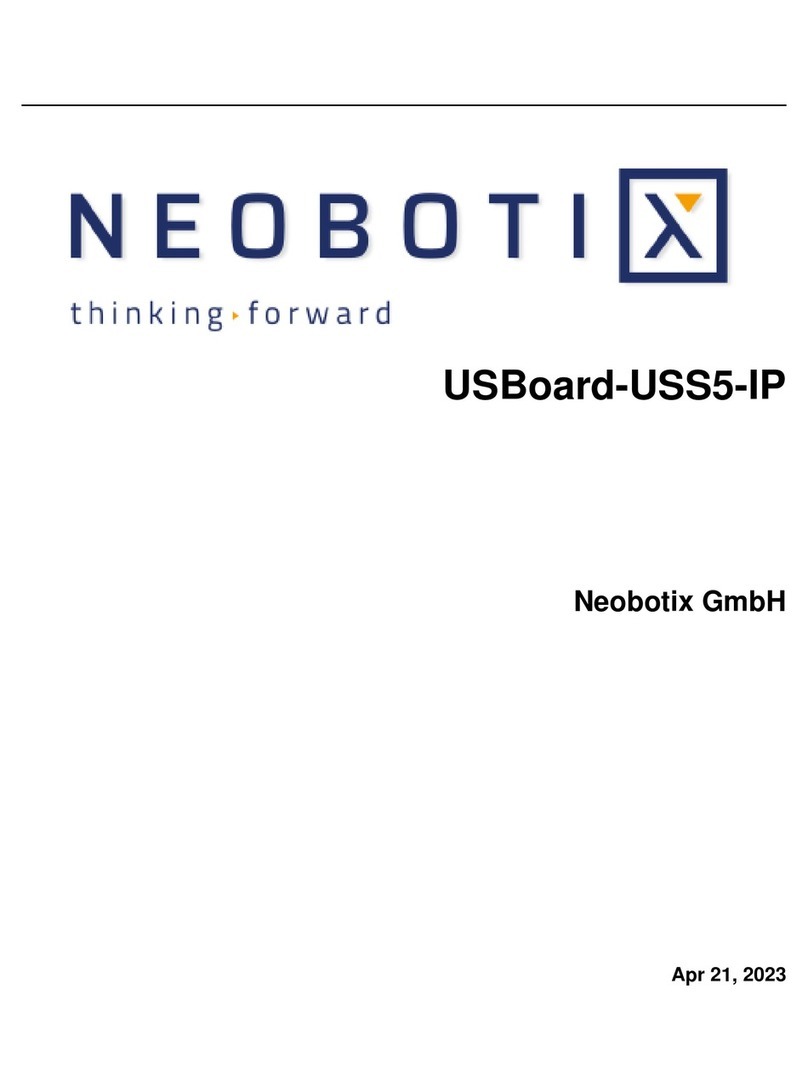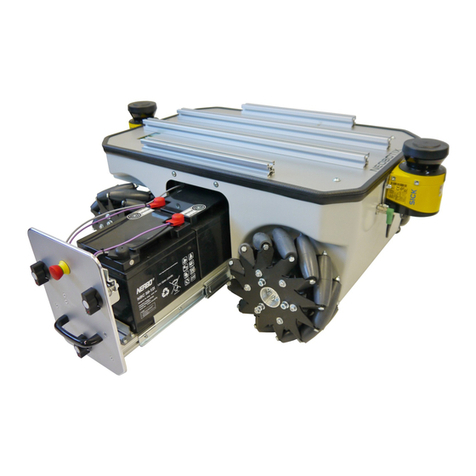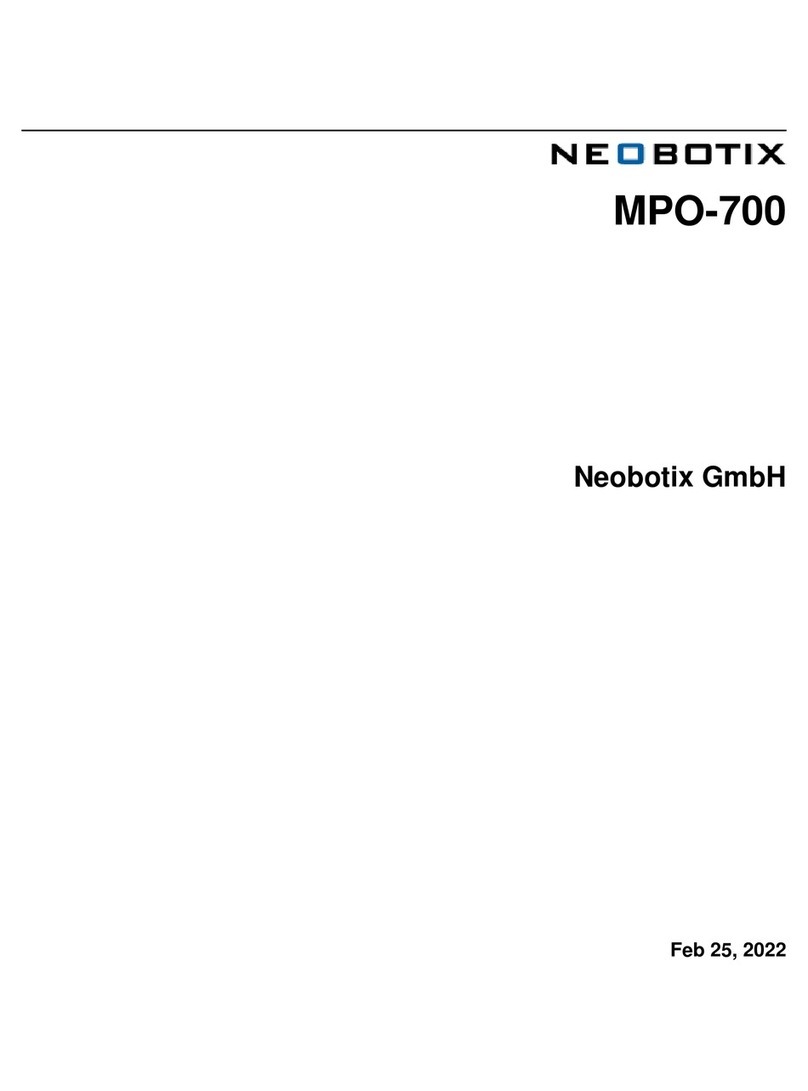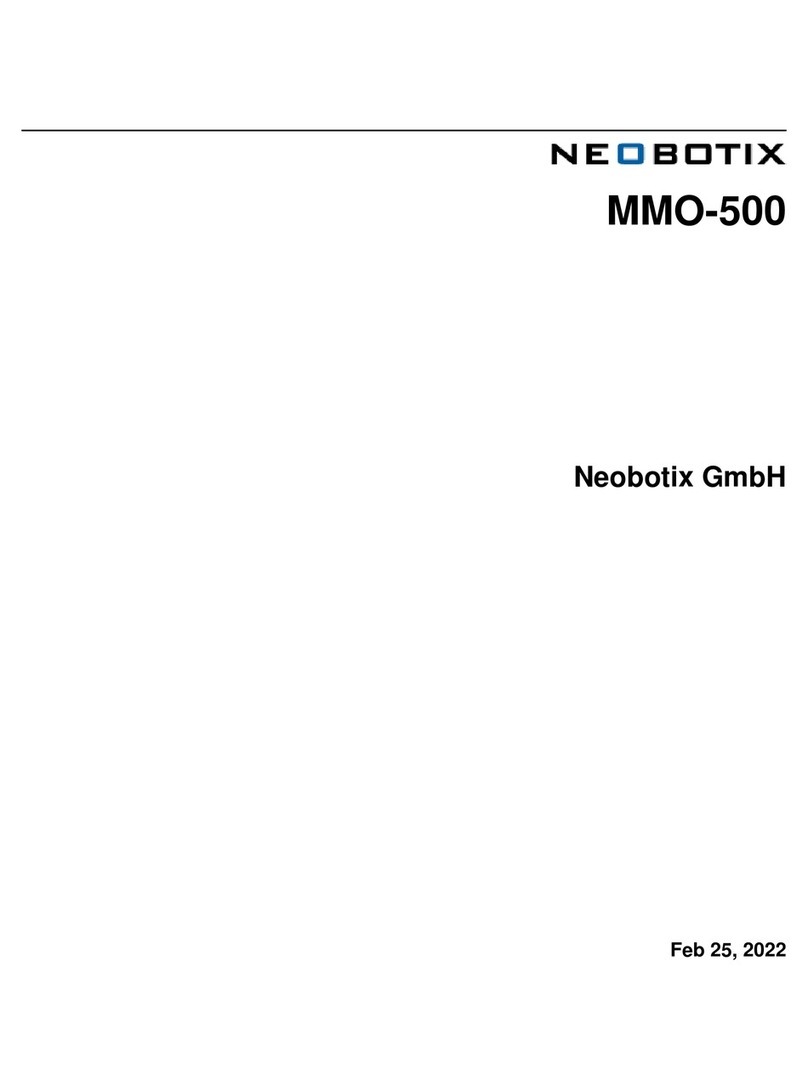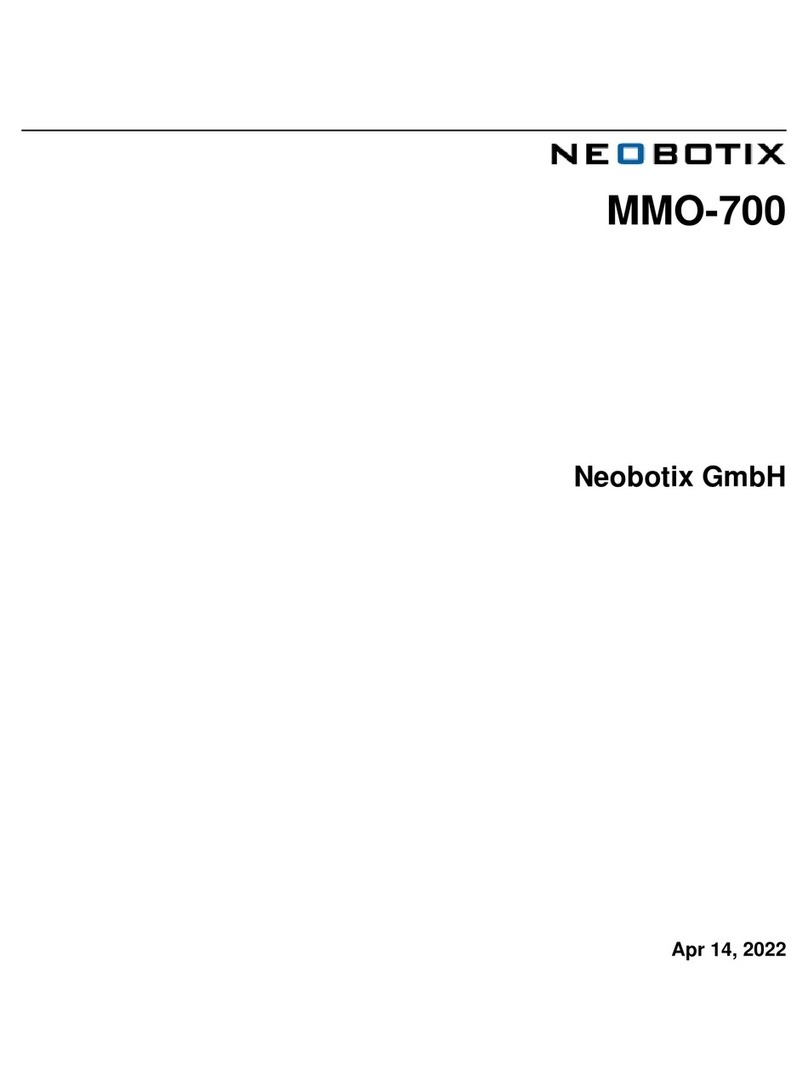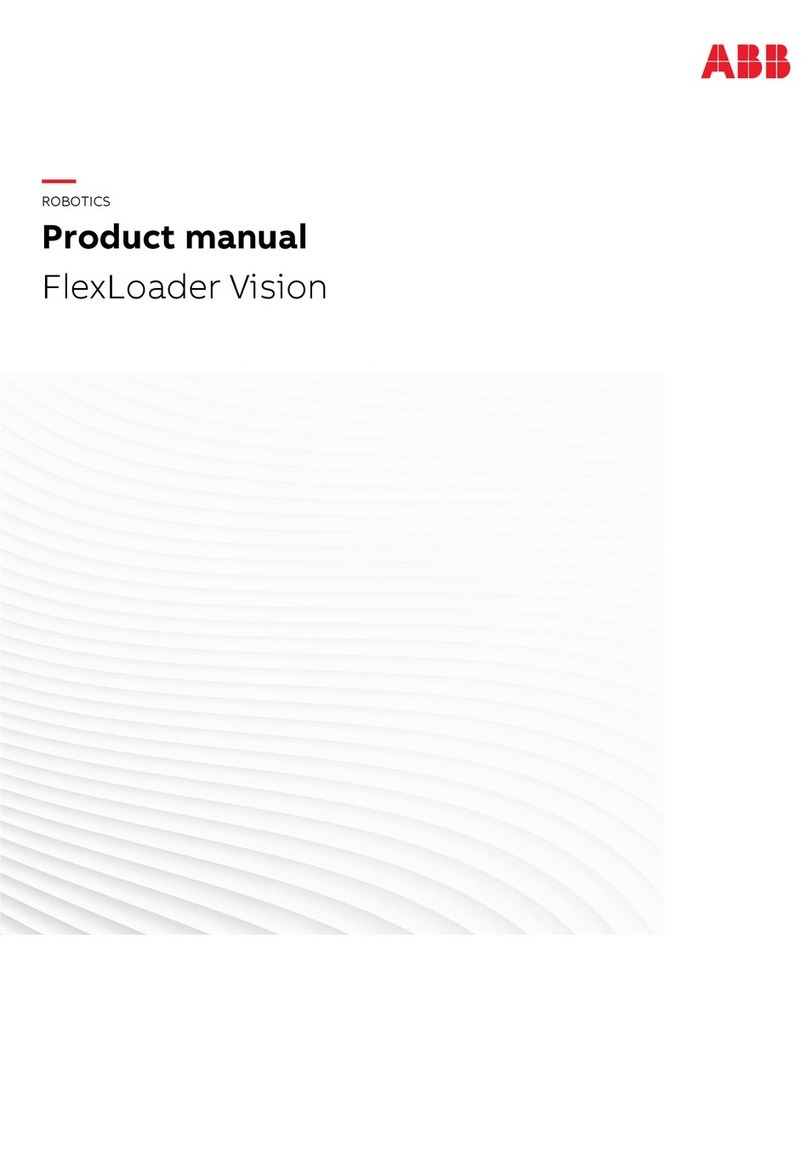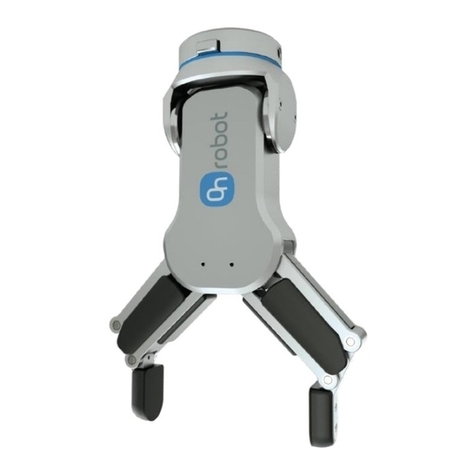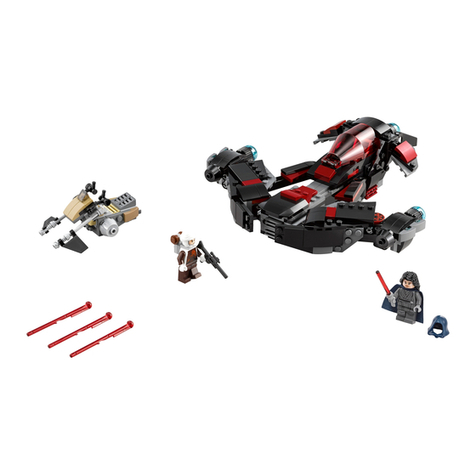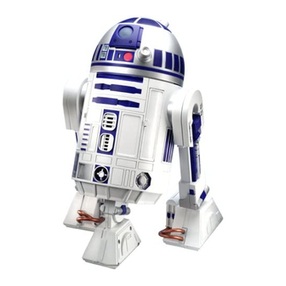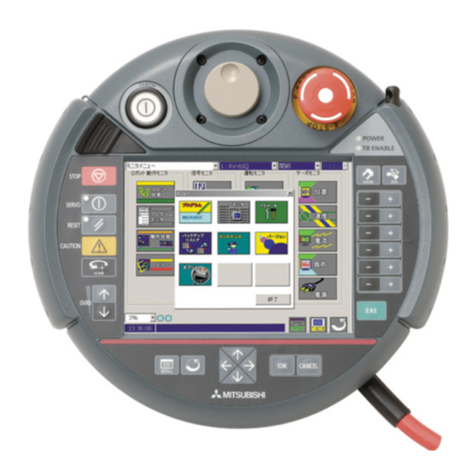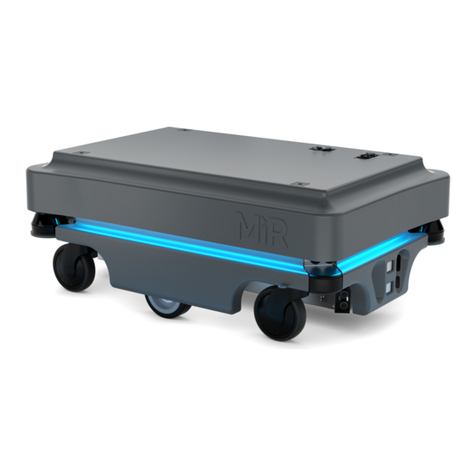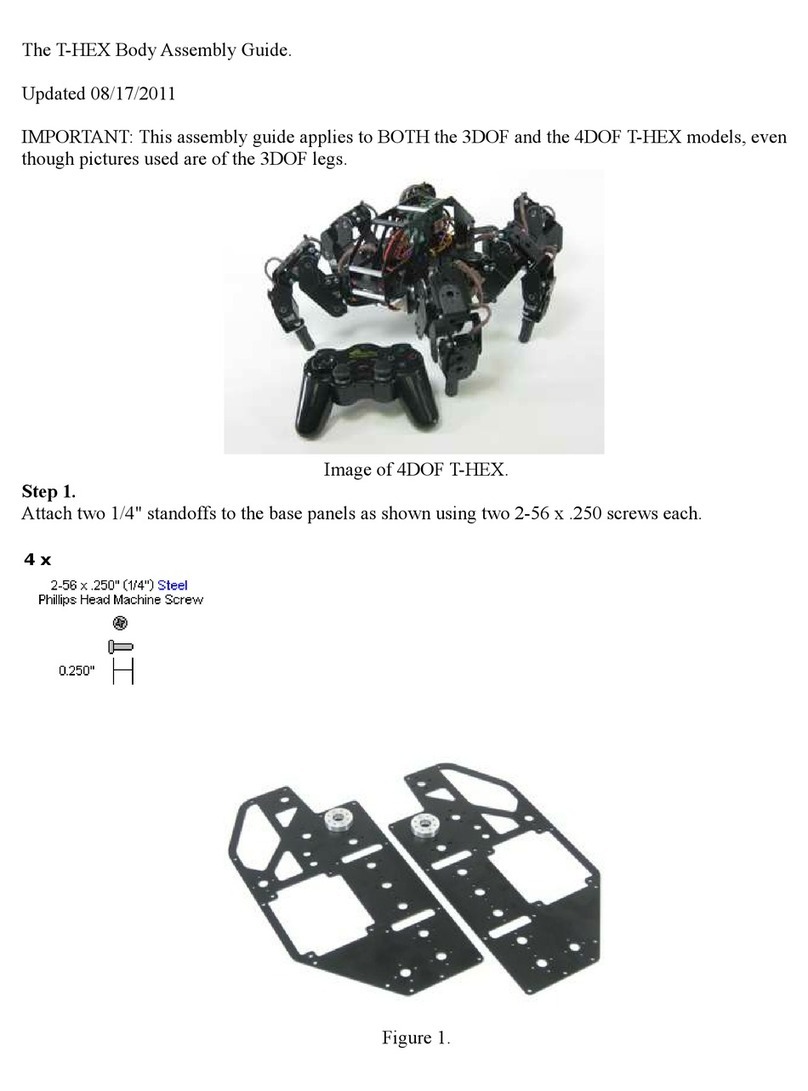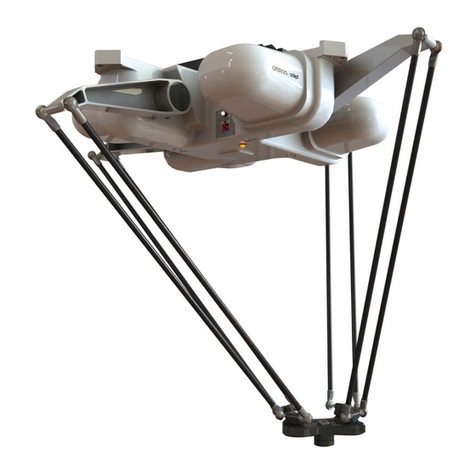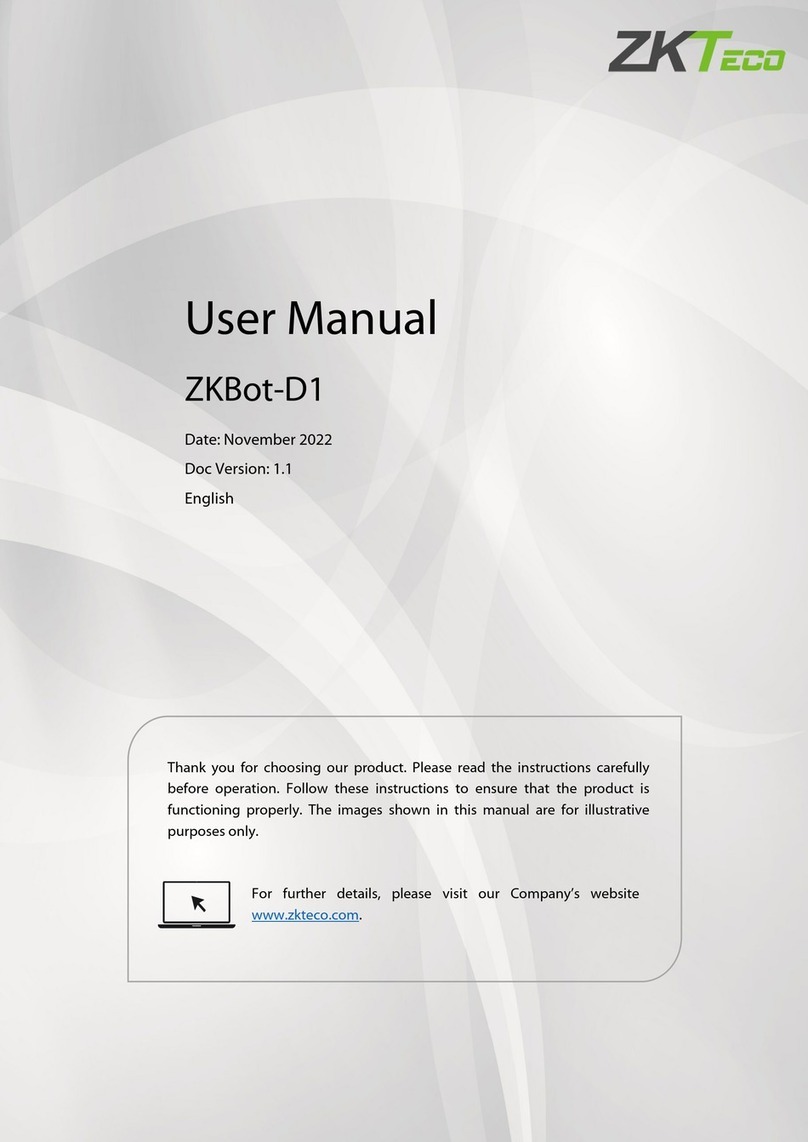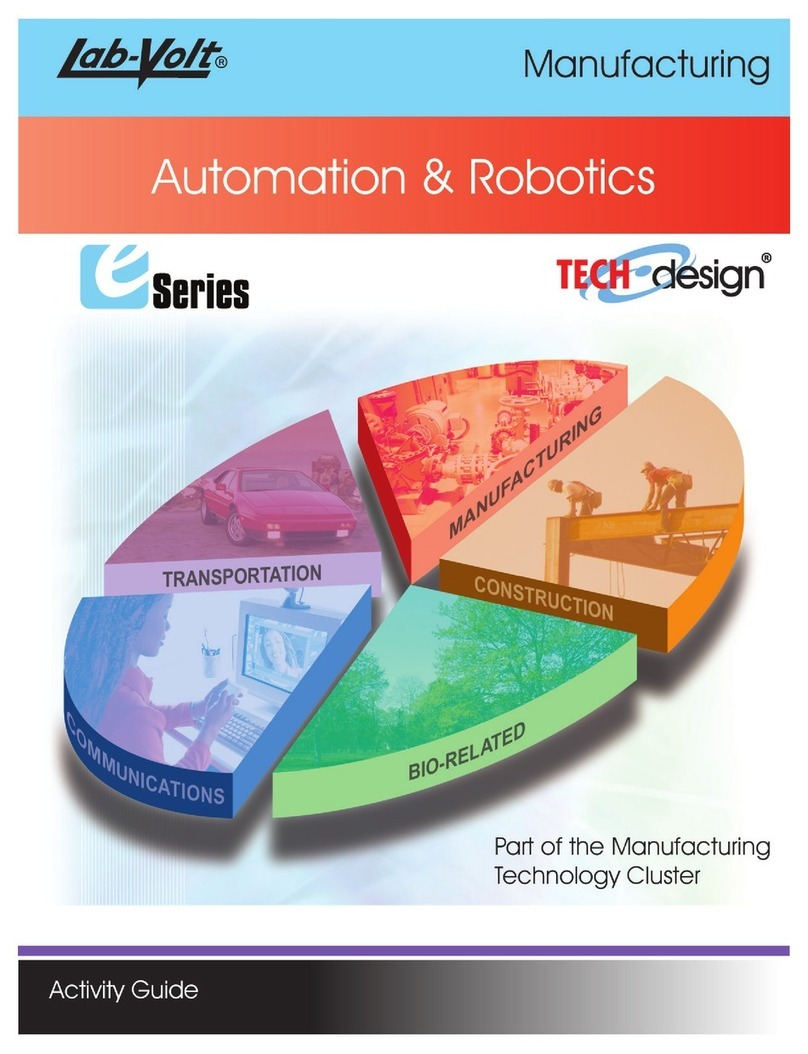neobotix Omni Drive Module User manual

Omni Drive Module
Neobotix GmbH
Apr 14, 2022

Contents:
1 Omni Drive Module 1
1.1 Product Description ........................................... 2
1.1.1 Components ........................................... 2
1.1.2 Possible Drive Kinematics ................................... 2
1.1.3 Special Features ......................................... 4
1.2 Safety ................................................... 5
1.2.1 Intended Usage ......................................... 5
1.2.2 Improper Usage ......................................... 5
1.2.3 Qualified Personnel ....................................... 5
1.2.4 Safety Measures and Precautions ................................ 6
1.3 Mounting ................................................. 6
1.3.1 Integrating the Module into a Platform ............................. 6
1.3.2 Mounting Components onto the Module ............................ 6
1.4 Electrical Installation ........................................... 6
1.4.1 Power Supply .......................................... 6
1.4.2 Communication Interfaces ................................... 11
1.4.3 Digital-I/Os ........................................... 12
1.5 Configuration ............................................... 14
1.5.1 Connecting to the Amplifiers .................................. 15
1.5.2 Handling Different Configurations ............................... 17
1.5.3 Advanced Settings ....................................... 18
1.5.4 Testing and Debugging ..................................... 19
1.6 Maintenance ............................................... 19
1.6.1 Cleaning ............................................. 19
1.6.2 Traction Wheel ......................................... 19
1.7 Technical Data .............................................. 20
1.7.1 Dimensions ........................................... 20
1.7.2 Board-Layout .......................................... 20
1.7.3 Properties ............................................ 21
1.8 Taking out of Service ........................................... 21
1.9 Legal Notes ................................................ 21
1.9.1 Declaration of Incorporation .................................. 21
1.9.2 RoHS Information ....................................... 21
2 Qualified Personnel 22
3 Taking out of Service 23
i

3.1 Disassembly ............................................... 23
3.2 Recycling ................................................. 23
3.2.1 Reusable components ...................................... 23
3.3 Mechanical parts ............................................. 24
3.4 Electrical components .......................................... 24
3.5 Batteries ................................................. 24
4 Legal Notes 25
4.1 Version Information ........................................... 25
4.2 Liability ................................................. 25
4.3 Downloads and Further Information ................................... 25
ii

CHAPTER 1
Omni Drive Module
_
Download as PDF1
The Neobotix Omni-Drive-Modules have been designed to allow engineers and designers to easily create their own,
customised mobile robot platform. Different from other solutions, the kinematics of the ODM enables the mobile
robot to move omnidirectionally even on a floor that is not perfectly flat.
These modules are intended for research and experiments and need to be modified and completed by the customer.
Several important issues must be considered when working with them:
• The Omni-Drive-Module is a partly completed machine and not ready for immediate operation.
• The drive amplifiers have been configured with general purpose settings. Some of these settings might need to
be adjusted according to the individual application in order to achieve the best performance.
1https://neobotix-docs.de/hardware/en/Omnidrive.pdf
1

CHAPTER 1. OMNI DRIVE MODULE 1.1. PRODUCT DESCRIPTION
• Being only partly completed machines, the Omni-Drive-Modules are not conform with all EC Directives appli-
cable for turnkey machinery.
• To achieve the level of safety required by the applicable directives the customer must integrate the ODM into
another machine. Additional measures might be necessary to ensure the safe operation of the completed ma-
chine.
• An independent assessment of risks has to be performed by the customer to verify conformity with all applicable
directives.
• Only the customer can be held responsible for the safe operation of the Omni-Drive-Module.
1.1 Product Description
The Neobotix Omni-Drive-Module is a two-axes drive unit for use in a mobile robot or a similar application.
The module contains two high-performance servomotors with an industrial grade servo amplifier each (“Whistle
10/60” from Elmo Motion Control), mounted to a common printed circuit board. One of the motors drives the mod-
ule’s driving wheel while the other motor rotates the wheel around its vertical axis. Both motors can rotate infinitely
without mechanical boundaries, thus allowing an omnidirectional robot to move continuously and without the need to
re-align the wheels due to any limits. The orientation drive features an inductive position switch which can be used
for homing.
Due to the high transmission ratio of both worm gearings, no brake is required. This significantly reduces the module’s
power consumption and heating. Fail-safe brakes can be integrated for additional safety.
1.1.1 Components
The Omni-Drive-Module is made up from the following components:
1.1.2 Possible Drive Kinematics
The Omni-Drive-Modules can be used to build several different drive kinematics according to the application’s re-
quirements. Each configuration has its own advantages and disadvantages. The most commonly used configurations
2

CHAPTER 1. OMNI DRIVE MODULE 1.1. PRODUCT DESCRIPTION
are the following:
1.1.2.1 1 Omni-Drive-Module with 2 fixed rollers
This configuration is the cheapest and easiest to control. Although possible, it is very rare that the Omni-Drive-Module
is moved in a way that will make the fixed wheels jam.
In this configuration, true omnidirectional motion is not possible since the vehicle will always follow the drive unit.
1.1.2.2 3 Omni-Drive-Modules
This configuration ensures high stability for smaller robots, avoids static indeterminacy and allows fully omnidirec-
tional movement.
All three wheels must be aligned correctly at all times to avoid jamming or slippage. Please mind that the angle
between the wheels must change according to the movement’s centre of rotation.
1.1.2.3 4 Omni-Drive-Modules
This configuration is most commonly used for service robots. It guarantees highest stability even for big and heavy
robots. Although it is statically indeterminate this will not cause problems in most applications because all wheels are
aligned actively.
3

CHAPTER 1. OMNI DRIVE MODULE 1.1. PRODUCT DESCRIPTION
All four wheels must be aligned correctly at all times to avoid jamming or slippage. Please mind that the angle between
the wheels must change according to the movement’s centre of rotation.
1.1.3 Special Features
1.1.3.1 Logic Power Supply
The drive amplifiers of the Omni-Drive-Module feature a separate power supply pin for the internal logic unit. In
case of an emergency stop the main power line can be cut without affecting the internal microcontroller or the motors’
feedback devices.
This means that during emergency stop all important functions of the drives (CAN-communication, position detection,
etc.) are maintained even if the possibly dangerous power is switched off and motions are stopped.
1.1.3.2 Position Switch
An internal inductive position sensor is connected to the amplifier of the orientation drive and can be used for homing.
Due to variances in the assembly process the homing position may slightly differ from module to module. Therefore
the control software must implement an adjustable offset for each orientation drive.
Tip: Proper functioning of the overall drive system can only be achieved by aligning all wheels correctly at all times.
1.1.3.3 Digital and Analogue I/Os
Each drive amplifier provides six digital inputs, two digital outputs and one analogue input. Three digital inputs and
one digital output can be accessed via the PCB’s connectors. Please refer to Digital-I/Os (page 12) for details. One of
the inputs is used for the position switch of the orientation drive. Further information about the I/Os can be found on
the Elmo Motion Control homepage at https://www.elmomc.com/.
1.1.3.4 Programming
Each drive amplifier contains an integrated logic capable of running simple user programs. This feature can be used
to shift some basic functions from the main control software to the drive amplifiers. Possible functions are:
• Automatic homing after power on
• Automatic realignment of the drives after emergency stop
• Automatic motor off after a predefined time of inactivity
Details on the programming feature can be found on the Elmo Motion Control homepage.
4

CHAPTER 1. OMNI DRIVE MODULE 1.2. SAFETY
1.2 Safety
1.2.1 Intended Usage
1.2.1.1 Fields of Application
The Omni-Drive-Module is intended to be used as part of the drive system of a mobile robot. It has been designed
for use in fields like robotics, autonomous vehicles and intralogistics. Vehicles based on the Neobotix Omni-Drive-
Module may be used in laboratories and similar controlled indoor environments without public access.
1.2.1.2 Environmental Conditions
The Omni-Drive-Module must only be used indoors. Outdoor use may significantly reduce the system’s life ex-
pectancy and may result in damages to the module.
Due to the unsealed drive amplifiers at the side of the Omni-Drive-Module it has to be protected against collisions,
dirt, metal objects (e.g. screws or washers) and moisture.
Under normal operating conditions the massive aluminium body of the drive module serves as a sufficient heat sink
for the amplifiers, the motors and the gears. In case the module is to be covered completely, appropriate ventilation or
other means of cooling might become necessary.
The drive module must be kept clean at all times. Exposure to excessive dirt or moisture may lead to damage of the
ball bearings or other moving parts. Neobotix cannot be held responsible for damages caused by dirt or moisture.
1.2.2 Improper Usage
Warning:
• Using a vehicle based on the Omni-Drive-Modules for any kind of passenger transportation is strictly pro-
hibited. Climbing onto any vehicle that is based on the Neobotix Omni-Drive-Modules is also prohibited.
• It is prohibited to operate a vehicle based on the Omni-Drive-Module in public areas without supervision by
a qualified trained person.
• The Neobotix Omni-Drive-Modules must be kept dry at all times. Exposing the modules to rain, mist or
splash-water may cause severe damage to the electronic components.
Tip: The control software for aligning and moving two or more ODMs must be tested with special care. Using an
untested or faulty control software may damage the modules or even the complete vehicle.
1.2.3 Qualified Personnel
This product must only be modified, commissioned, operated and serviced by qualified personnel. More information
can be found at Qualified Personnel (page 22).
5

CHAPTER 1. OMNI DRIVE MODULE 1.3. MOUNTING
1.2.4 Safety Measures and Precautions
In order to ensure a safe and successful operation of the Omni-Drive-Module, please mind the following:
• Always take care to protect the drive amplifiers at the side of the module against collisions and moisture.
• Always lift the wheels off the ground while working on the control software.
• Always test any new or changed control software thoroughly with the wheels lifted off the ground. Make sure
that the alignment of all wheels is correct at all times and under all conditions.
• The wire diameter of the power supply to the Omni-Drive-Modules as well as any relays must be chosen ac-
cording to the maximum expected current.
Warning: If three or more modules are used, very high sum currents might occur.
1.3 Mounting
1.3.1 Integrating the Module into a Platform
Six threaded holes in the bottom side of the Omni-Drive-Module can be used to mount the module onto a carrier plate.
The Omni-Drive-Module is not designed to be mounted under a vehicle but into it. The base plate of your vehicle
must be in between the wheel carrier assembly and the gearbox housing.
A U-shaped cut-out of 60 mm to 70 mm width is recommended for the vertical axle of the wheel carrier assembly.
1.3.2 Mounting Components onto the Module
If all Omni-Drive-Modules are mounted to a common base plate, additional components may be placed on top of the
modules. The step above the drive amplifiers can be used for mounting an auxiliary plate. This might be used to carry
smaller components, for example electronic devices.
Using a single plate on top of and screwed to all modules will significantly improve the structure of the overall drive
system. It will also optimise the distribution of forces thus allowing a high payload.
1.4 Electrical Installation
1.4.1 Power Supply
1.4.1.1 Main Power
Both drive amplifiers are connected to common supply lines. Use the following components for the power supply:
• Plug: Würth Elektronik, Series 351 WR-TBL, 691 351 500 003
• Plug (alternative): Phoenix Contact, MSTB 2,5 HC/ 3-ST, 1911868
• Power cable: H07V-K or better, 2,5 mm2or bigger
• Logic supply cable: H05V-K or better, 0,5 mm2or bigger
6

CHAPTER 1. OMNI DRIVE MODULE 1.4. ELECTRICAL INSTALLATION
Fig. 1: Dimensions of the Omni Drive Module
7

CHAPTER 1. OMNI DRIVE MODULE 1.4. ELECTRICAL INSTALLATION
Fig. 2: Bottom view of the Omni Drive Module
8

CHAPTER 1. OMNI DRIVE MODULE 1.4. ELECTRICAL INSTALLATION
Fig. 3: Top view of the Omni Drive Module
9

CHAPTER 1. OMNI DRIVE MODULE 1.4. ELECTRICAL INSTALLATION
The internal logic unit of the drive amplifiers can be powered independently from the main power supply. In case of
an emergency stop the amplifiers will still be running, keeping track of the motor position and communicating on the
CAN-bus.
Tip: By default the Omni-Drive-Module is configured for 24 V logic supply voltage. Please contact Neobotix if you
want to use other supply voltages.
The pin assignment is as follows:
Pin Function Voltage / VDC Description
1 Common ground 0 Common return line
2 Motor power supply 20 – 59 Main power supply, may be switched off
3 24V logic supply 11 – 30 Auxiliary supply, not to be switched at stop
1.4.1.2 Position Switch
If 24 V are used as logic supply voltage, the inductive position switch of the orientation drive is powered directly from
the amplifiers’ PCB. If different voltages are used, they must be connected to a common ground.
Attention: The ground line of the digital input is by default connected to the common ground of the amplifier
power supply. In case independent supply voltages are required, please contact Neobotix.
Use the following components for the power supply of the switch in case you are not supplying 24 V for the amplifiers’
logic:
• Housing: Würth Elektronik, MPC4, receptacle, dual row, 2 circuits, 649002113322
• Contacts: Würth Elektronik, MPC4, crimp terminal female, 18-24 AWG, 64900613722DEC
The pin assignment is as follows:
Pin Function Voltage / VDC Description
1 Supply 24 Position switch power supply
2 Ground 0 Return line
1.4.1.3 Brakes
The servomotors can optionally be equipped with fail-safe brakes that need to be released while the motor rotates. A
24 V supply capable of providing 0.75 A is required for the brake.
Use the following components for the power supply of the brakes:
10

CHAPTER 1. OMNI DRIVE MODULE 1.4. ELECTRICAL INSTALLATION
• Housing: Molex, series KK receptacle 2 circuits, 22-01-2021
• Contacts: Molex, series KK crimp terminal 22-30 AWG, 08-50-0032
The pin assignment is as follows:
Pin Function Voltage / VDC Description
•Ground 0 Return line
•Supply 24 Brake power supply
1.4.2 Communication Interfaces
1.4.2.1 CAN
Both drive amplifiers are connected to the PCB’s CAN-bus connector. Please use the following components for the
CAN-bus connection:
• Housing: TE Connectivity, HE14 receptacle double row 8 circuits, 281839-4
• Contacts: TE Connectivity, HE14 crimp terminal female 28-24 AWG, 182734-2
The pin assignment is as follows:
Pin Function
1,5 GND
2,6 CANL
3,7 CANH
4,8 Shield
If the CAN bus ends at one of the Omni-Drive-Modules a terminating resistor of 120 Ωhas to be activated. Please
move switch S1 beside the LEDs to position ON.
1.4.2.2 RS-232
Each drive amplifier has a separate RS-232-interface which can be used for configuration and for communication with
the control software.
11

CHAPTER 1. OMNI DRIVE MODULE 1.4. ELECTRICAL INSTALLATION
Pin Function Description
1 GND (Orientation) Reference ground line (orientation drive)
2 TxD (Orientation) Transmit line (orientation drive)
3 RxD (Orientation) Receive line (orientation drive)
4 GND (Traction) Reference ground line (traction drive)
5 TxD (Traction) Transmit line (traction drive)
6 RxD (Traction) Receive line (traction drive)
1.4.3 Digital-I/Os
The drive amplifiers each feature 6 digital inputs, 2 digital outputs and 1 analogue input which may be used for special
functions if required. They can be assigned to predefined functions (torque off, hard stop, etc.) or be accessed by the
user program running on the amplifier. Their current state can also be read by the control software via the CAN-bus
or the serial interface.
The connectors X2 and X5 of the PCB provide easy access to three of the digital inputs and one digital output. These
inputs can be equipped with a limiting resistor if the signal voltage is higher than 5 V. The positions for these are
marked “Rin1”, “Rin2” and “Rin3” and are located right beside the connectors.
Please keep in mind that the limiting resistor has to be bridged if the default signal level of 5 V is used.
The digital input 1 of the orientation drive amplifier is connected to the output of the position switch and cannot be
used for customised functions.
Tip: The ground line of the digital inputs of the orientation drive amplifier is by default tied to the common ground
of the amplifier power supply. In case independent voltage levels are required, please contact Neobotix.
The return line of the digital inputs of the traction drive amplifier can also be tied to the common ground by bridging
the solder jumper marked “G
I-”.
The motors’ encoder signals are also available at the IO connectors. They can for example be used for motion moni-
toring by an external safety device.
Furthermore the IO connectors provide power supply for additional low power sensors. The module’s logic supply
voltage is available at pins “VL” (supply) and “G” (ground).
Further information can be found in the documentation of the drive amplifier “Whistle” on the homepage of Elmo
Motion Control at https://www.elmomc.com/.
Use the following components for the I/O connection:
• Housing: TE Connectivity, HE14 receptacle double row 12 circuits, 281839-6
• Contacts: TE Connectivity, HE14 crimp terminal female 28-24 AWG, 182734-2
12

CHAPTER 1. OMNI DRIVE MODULE 1.4. ELECTRICAL INSTALLATION
Pin Function Description
1 A+ Channel A of the TTL motor encoder, for motion monitoring
2 B+ Channel A of the TTL motor encoder, for motion monitoring
3 O- Emitter contact of the optocoupler of digital output 1
4 G Main ground
5 I- Common ground of the digital inputs
6 I2 Digital input 2 (mind the limiting resistor)
7 A- Channel A (inverted) of the TTL motor encoder, for motion monitoring
8 B- Channel B (inverted) of the TTL motor encoder, for motion monitoring
9 O1 Collector contact of the optocoupler of digital output 1
10 VL Logic supply (output)
11 I1 Digital input 1 (mind the limiting resistor)
12 I3 Digital input 3 (mind the limiting resistor)
1.4.3.1 Motion Monitoring
On request the connectors can be prepared to provide direct access to the encoder signals of the traction and / or
orientation motor from outside.
This option will change the pin assignment as follows.
Pin Function Description
1 O- Emitter contact of the optocoupler of digital output 1
2 B+ Channel A of the TTL motor encoder, for motion monitoring
3 A+ Channel A of the TTL motor encoder, for motion monitoring
4 O1 Collector contact of the optocoupler of digital output 1
5 B- Channel B (inverted) of the TTL motor encoder, for motion monitoring
6 A- Channel A (inverted) of the TTL motor encoder, for motion monitoring
This option requires different connector housings:
TE Connectivity, HE14 receptacle double row 6 circuits, 281839-3
13

CHAPTER 1. OMNI DRIVE MODULE 1.5. CONFIGURATION
1.4.3.2 Enable Lines
On request the drive amplifiers can be configured to have two 24 V enable lines. The signals can be integrated into the
CAN bus cable and then be conveniently patched through to all Omni-Drive-Modules.
This option uses digital inputs 2 and 3 which then are no longer available for other functions.
Attention: Please note that this feature is not safety approved.
The pin assignment of the CAN bus connector changes as follows:
Pin Function
1,7 GND
2,8 CANL
3,9 CANH
4,10 Shield
5,11 Enable1
6,12 Enable 2
This option requires the same connector housings as the digital I/Os.
1.5 Configuration
The best way to configure and optimise the drive amplifiers is by using the interface software Composer which is
provided for free download from the homepage of the manufacturer Elmo Motion Control. The latest version can be
found at:
https://www.elmomc.com/product/composer/
It is recommended to connect the computer that runs the Composer to the amplifier by a standard RS-232 serial
connection (COM port). The appropriate configuration cable can be supplied on request.
The drive amplifiers are configured with general purpose settings and ready for operation. Before the Omni-Drive-
Module can be used in a mobile robot, the communication parameters have to be adjusted according to the features of
the control system.
If extraordinary kinematics are to be realised or if the modules are to be used under extreme conditions (very heavy
vehicle or payload, uneven or soft floor, asymmetric centre of gravity, . . . ) it might be necessary to adjust the control
loop parameters of some or all amplifiers. Please contact Neobotix in such cases.
14

CHAPTER 1. OMNI DRIVE MODULE 1.5. CONFIGURATION
1.5.1 Connecting to the Amplifiers
After installing and starting the Composer the start dialogue will appear. Connect the computer to the amplifier by
using the configuration cable and turn on the power supply of the amplifier.
Note: Please be careful to actually connect to the amplifier which you currently want to access.
Choose Open Communication Directly to open the communication settings dialogue. After selecting RS 232 as inter-
face and clicking Properties you can select the COM port that you are using. Please select a baud rate of 57600 Bit Per
Second and click Connect. The dialogue should close and the configuration toolbox, called Smart Terminal, should
appear.
15

CHAPTER 1. OMNI DRIVE MODULE 1.5. CONFIGURATION
In case you cannot connect to the amplifier, please check the following:
• Amplifier power: Is the amplifier connected to a sufficient power supply and is the power supply turned on?
In case the module is connected to a laboratory power supply: Is the current limit high enough to provide the
inrush current and a sufficiently fast rise of the logic supply voltage?
• Cable: Is the computer actually connected to the correct amplifier? When handling several drives in a row it
sometimes happens that only the power supply is connected to the next module while the configuration cable is
still plugged to the previous module.
• Baud rate: The baud rate of the serial connections has been changed to 57.6 kBaud to make working with the
modules more convenient. The default baud rate of the Composer is only 19.2 kBaud.
• COM port: Try other COM port numbers. If a USB-to-serial converter or a similar device is used, please check
which number has currently been assigned to the interface. Close the Composer, re-connect the converter and
restart the Composer.
Use the button Disconnect on the right end of the main toolbar to close the connection to the amplifier. Disconnect
button is shown below:
16

CHAPTER 1. OMNI DRIVE MODULE 1.5. CONFIGURATION
1.5.2 Handling Different Configurations
There are basically three ways of handling different configurations.
Main buttons: Create New Application, Open Existing Application, Save Application (f.l.t.r.)
1.5.2.1 Saving the Current Configuration
After connecting to an amplifier the current configuration is automatically uploaded to the Composer and can be saved
in a file by clicking the button Save Application in the top left corner of the main window. The Composer will always
ask whether the current configuration should also be written to the amplifier’s non-volatile memory or if it should only
be written to a file on the computer.
A Save-As-dialogue will always appear. If the configuration has been saved before (in the current session), the last
used file name will be selected automatically but will also automatically have an extension indicating the currently
used interface. To avoid having duplicate files please select the appropriate file manually before clicking Save.
Any changes to the configuration on the amplifier can also be written to the non-volatile memory without creating a
file on the computer. Simply type “sv” into the command line of the Smart Terminal and hit Enter or click on Send.
1.5.2.2 Using an Existing File
To use a backup file simply click the button Open Existing Application, select the file and click Download in the open
dialogue. In case the current interface differs from the settings stored in the file, you will need to open the properties
dialogue by clicking Change in the Communication Info area of the file open dialogue.
After the connection has been established successfully, the configuration is downloaded to the volatile memory of the
amplifier. To save the configuration permanently, please refer to the previous section.
The motor specific commutation parameters are also stored in the configuration file. This means that any known motor
can be run by any amplifier after downloading the correct file to the amplifier. It also means that after connecting a
new motor to any amplifier, the unique commutation parameters of the new motor have to be determined even if all
other settings that are already saved in the amplifier may remain unchanged. Please contact Neobotix if you intend to
replace the motor.
1.5.2.3 Creating a New Configuration
All motor parameters can be defined anew by using an integrated wizard. Since the Omni-Drive-Modules are not
meant to be run with different motors, it is not recommended to modify any settings with this feature.
In case you intend to modify the drives or need any further assistance please contact Neobotix.
1.5.2.4 Basic Settings
The Smart Terminal of the Composer shows all the basic settings that can easily be changed. In case you need to
modify any other settings or need in-depths information, please refer to the documentation on the Elmo MC homepage
or contact Elmo MC or Neobotix directly.
17
Table of contents
Other neobotix Robotics manuals
Popular Robotics manuals by other brands
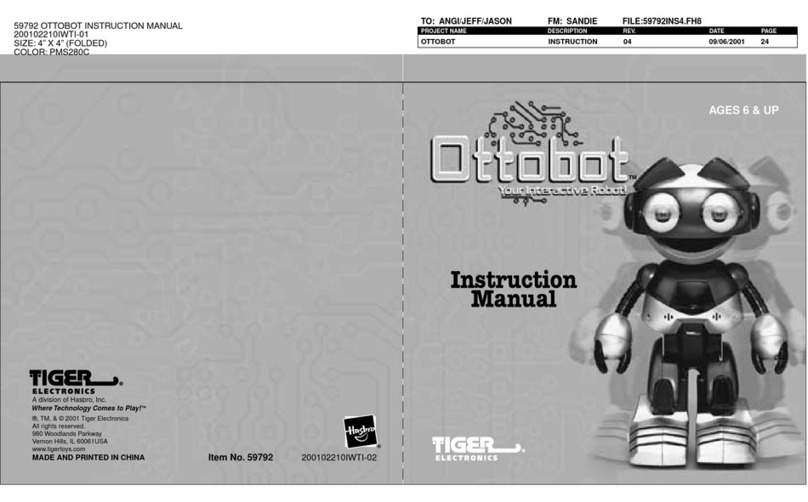
Tiger Electronics
Tiger Electronics OttoBot PMS280C instruction manual
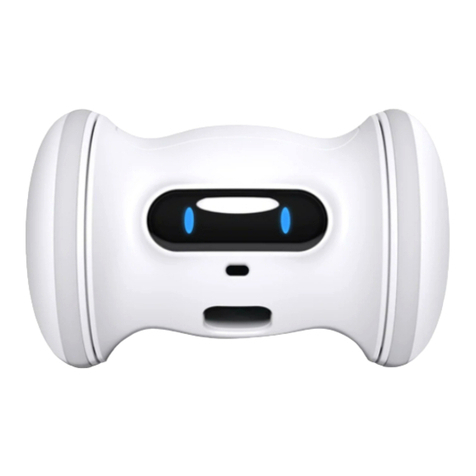
VARRAM
VARRAM Pet Fitness quick start guide
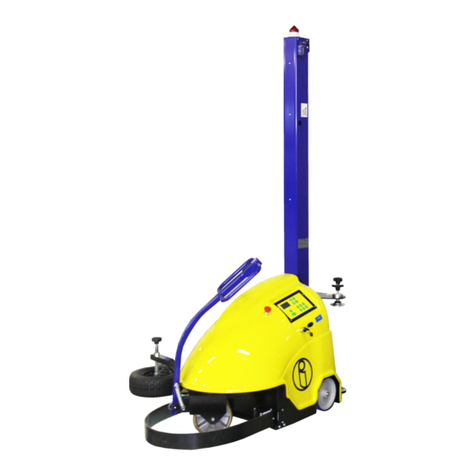
ItaldibiPack
ItaldibiPack LEONARDO SP instruction manual

OKM
OKM AH6 Maintenance manual

QUICK INTELLIGENT EQUIPMENT
QUICK INTELLIGENT EQUIPMENT ET8383 instruction manual
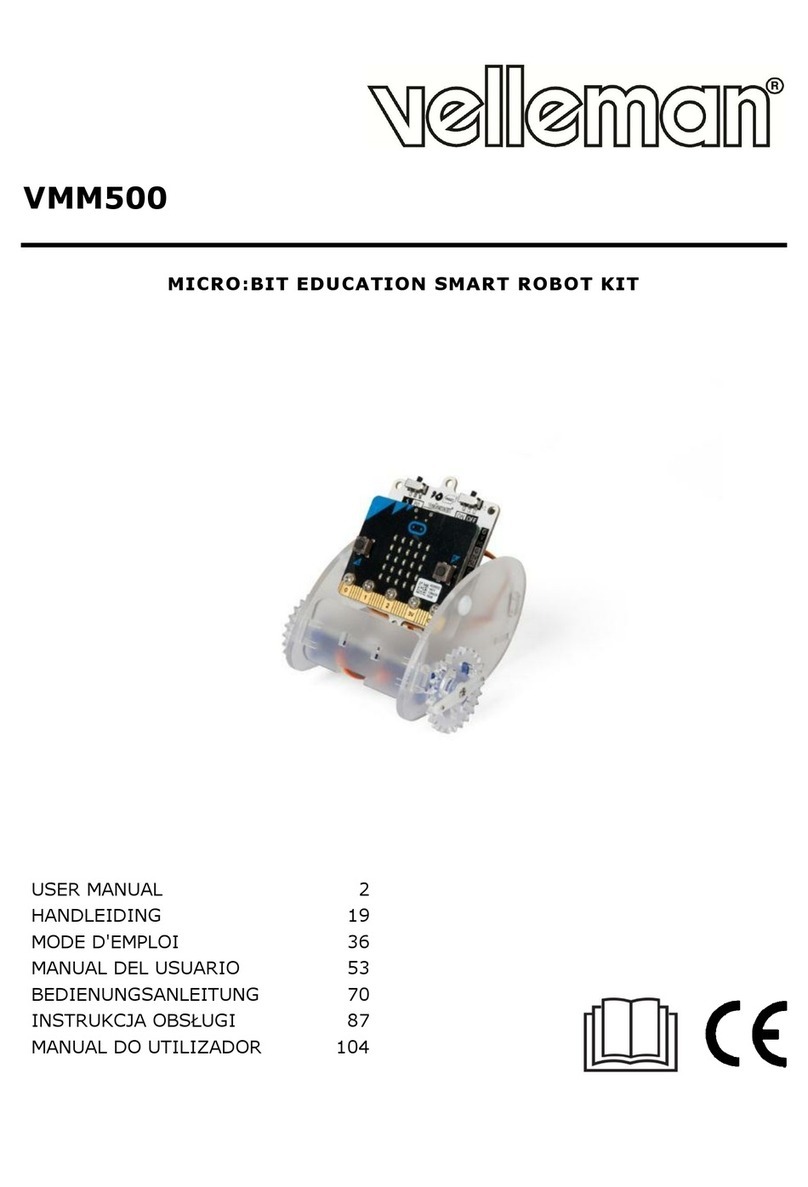
Velleman
Velleman VMM500 user manual
